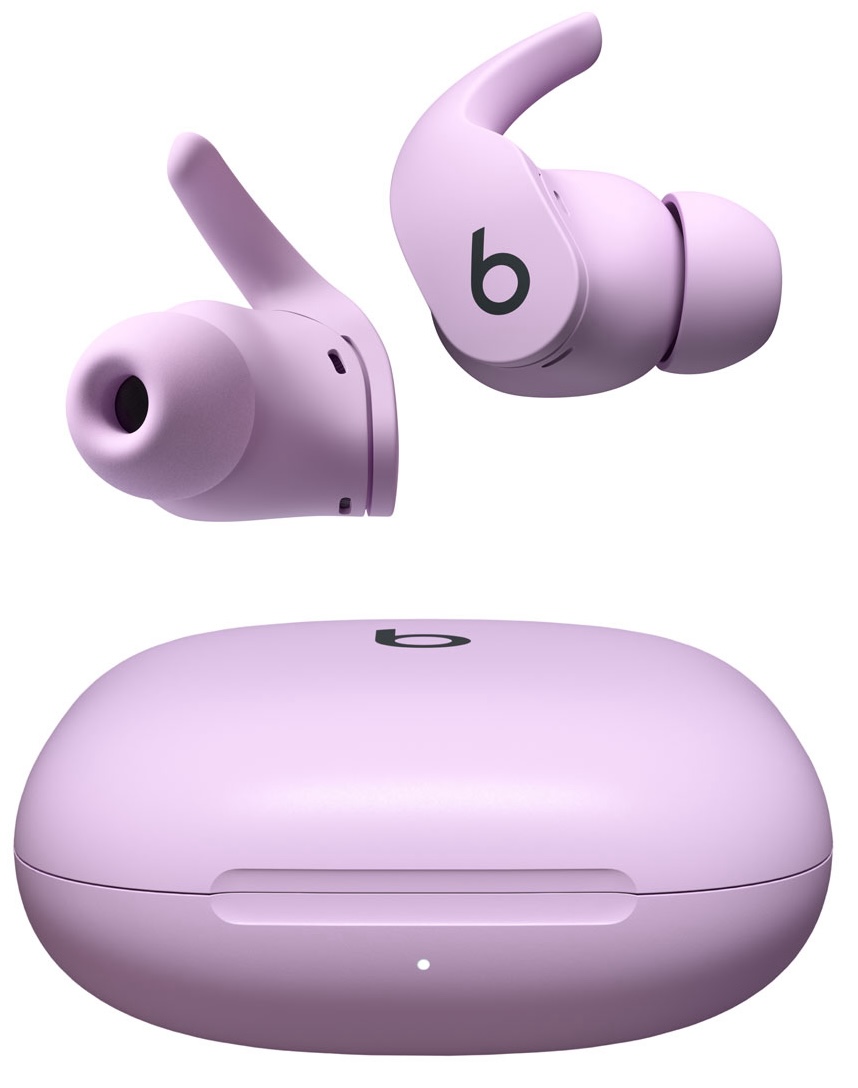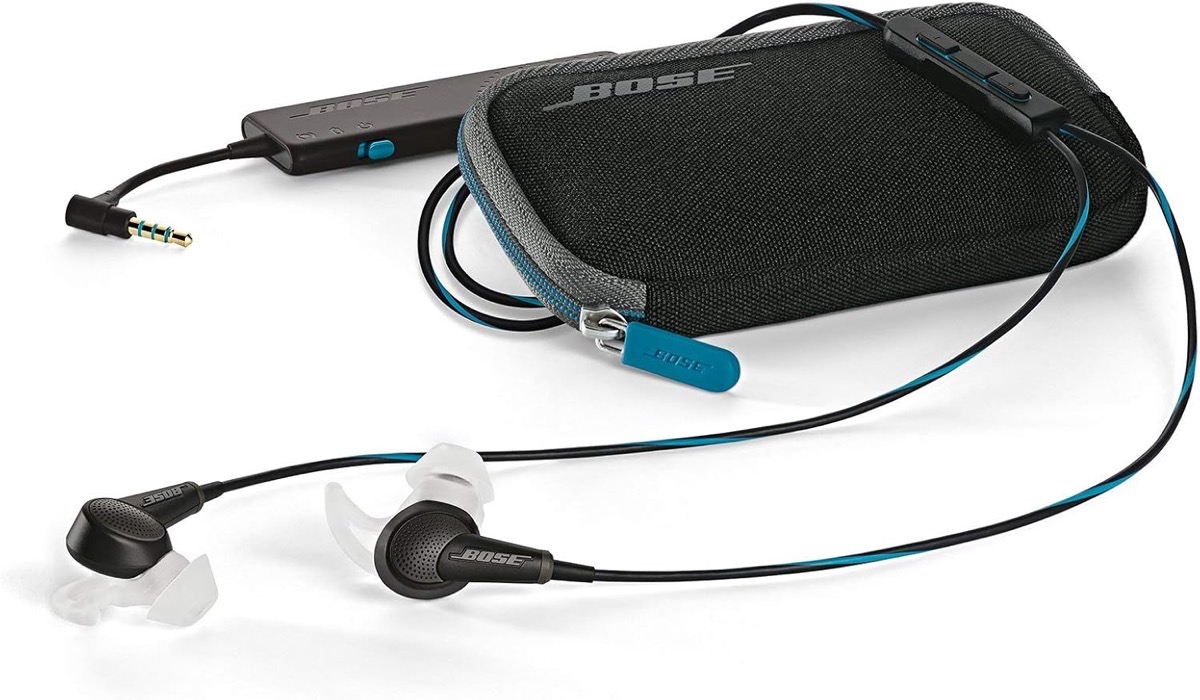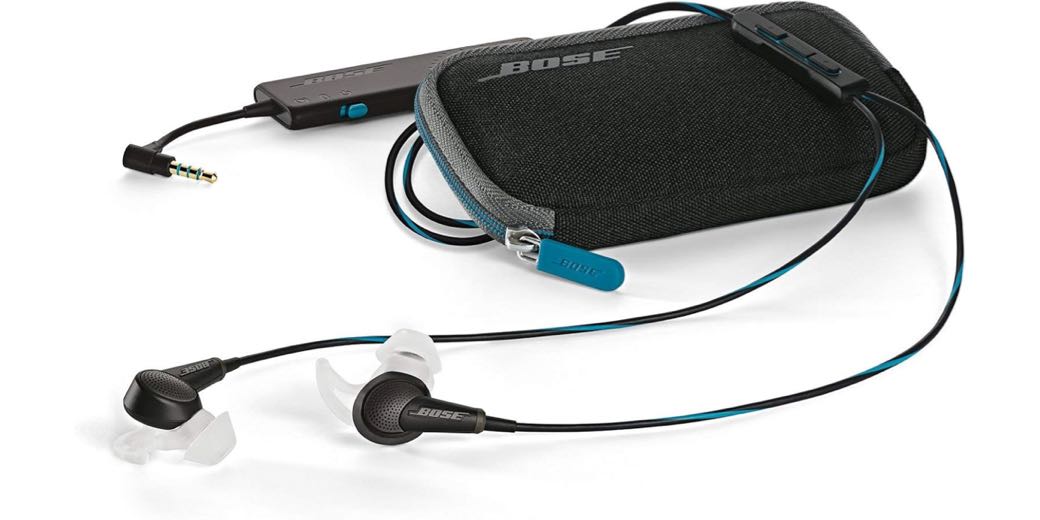When we met up with Kaylee at Macstock this year, I was reminded of how great it is that she figures out how to use technology that others may feel is too out of date to consider. In fact, I think she has a preference for older tech. She very proudly showed off her minidisc player, and explained what a good deal she got on it.
In that vein, I’m going to tell you about a tech gadget that Steve and I both swear by, and it’s not at all new. I’ll even admit that Steve was the one who rediscovered this solution to a long-term problem.

Steve and I both use the $200 Beats Fit Pro wireless earbuds with active noise cancellation. We use them while exercising and while doing yard or housework. They’re great for listening to podcasts and are especially good at canceling out noise on my long walks from passing cars. In case you’re wondering, I’m very careful watching for cars and rogue bicyclists.
The battery lasts for a crazy length of time, and the case recharges them. That’s old news, so what’s the problem to be solved now?
You may have noticed that Steve and I travel a fair bit, and a lot of our travel is on airplanes. The Beats Fit Pro headphones, while great at taking out the normal noise of life, don’t do a very good job of canceling the sound of jet engines. We carry our Macbooks and my iPad on trips so we can watch movies, but with the Beats, it’s really hard to hear the movies over the sound of those engines, even with noise cancellation enabled and the volume cranked all the way up.
Around a decade ago, Steve and I bought Bose Quiet Comfort QC20 wired earbuds. Steve decided to test them on a recent flight and he discovered that they’re still amazing at removing jet engine noise. He convinced me to bring mine for our flights to and within Africa (we had four 11-hour flights!) and they were a glorious improvement over the Beats Fit Pros for noise cancellation.

As I mentioned, the Bose QC20s are wired, but they’re so old that they connect to a headphone jack. We originally used them as-is with our headphone-jack-bearing iPhones, but when Apple got “courage” and removed the headphone jack, we bought the headphone jack to Lightning adapter. More recently when Apple got even more courage and switched the iPhones to USB-C, we needed yet another new adapter. I know it’s extravagant, but we popped the $9 to buy the Apple USB-C to headphone jack adapter.
The QC20 earbuds have very flexible rubber ear tips with a flange thingy that keeps them locked into your ear. We both find this a better solution to keep earbuds in your ear than the method the AirPods Pro use where you have to shove the little suction ear tip into your ear canal. Those never worked for Steve, and I found I had to fiddle with them quite a bit to get them to stay in, especially when jogging. That’s one of the reasons we like the Beats Fit Pro over any AirPod model.
On the QC20s, the wires from the earbuds join at a set of controls including a play/pause button and volume up/down buttons. If you follow the wire down to right before it connects to your device, there’s a small controller box which is about the size of a stick of gum. On the controller, there’s an on/off switch for the noise cancellation.

This gum-stick-sized controller box also contains the battery and processor for noise cancellation, and it charges via micro-USB. I have no idea how long the battery lasts because I’ve never tested it. I can say that I don’t even worry about charging it, so it must be pretty long. I hadn’t charged my Bose headphones in ages before our big trip, and yet they lasted through 3 of the 11-hour flights on our trip but had to be charged during the fourth one.
The QC20s come with a small, padded, zippered pouch that just fits the earbuds with the attached controller, and even has an internal side pocket that can hold a short charging cable. Since the QC20s came out in 1958 (ok, not that old), the included cable is micro USB to USB-A which means I have yet another dongle converting it to USB-C.
Back when we bought the Bose QC20s a decade ago, they were very expensive at $300, but they’ve lasted all this time and they’re still the best headphones we have to take out airplane noise and make it possible to hear our movies on the plane.
This review would be super mean if you could no longer buy the QC20s, and technically you can’t buy them new. However, right now, you can get them used for $165 US in the Bose Store on Amazon. If you look around, people are selling them on eBay brand new, in-box for closer to $120. I sure enjoyed channeling my inner Kaylee to tell you that new tech is not always better tech.


It’s good to know about the old tech that still works nicely in today’s world.
I thought you were gonna compare the Over the Ear headphones between the two brands.
The Beats headphones has a humongous case that nearly takes up all of the backpack’s interior space.
The Bose headphones nicely folds flat and tucks neatly into a backpack while leaving room for other things such as snacks, etc.
On the airplane, the Auto Noise Canceling emits a small noticeable hum for my hearing. I leave it disabled.
Since that switch, I’ve been sold on the Bose QuietComfort headphones for audio and its low footprint.
Your post prompted me to go find mine. They’re charging now (!) and I’ll likely buy YAD (yet another dongle) to try them out on a forthcoming long airline flight.
Excellent, David! That makes me so happy.
Niraj – I like over the ear headphones but I could never get behind the idea of carrying them for travel for the reasons you describe. I can’t even abide by the space the Bose take up lying flat…
I too have the Beats Fit Pro (mine are boring white) but also noticed that they did not do a good job cancelling jet noise. I was also worried that they could drop out if I fell asleep on the plane and it might be difficult to find them.
So I have now purchased some of the reviewed Bose Quiet Comfort QC20 wired earbuds. They are wonderfully compact and efficient, but I’m yet to try them on a plane – that will be later this month. Flying the first leg from Australia to anywhere is usually 14 hours, then a further 8 hours to the UK, so I’ll have a good opportunity to put them through their paces. I’m making a short trip to attend my aunt’s 100th birthday party.
Curse you Red Baron! Not only am I giving her a few pennies each month to keep her feeding my addiction to her podcast, but I continue to buy products she reviews and recommends.
Maybe if I stop listening to the Nosillacast I can save up enough to go to Macstock next year and confront this drug pusher in disguise… When is Macstock 2025 anyway…
Bwahahahaha!